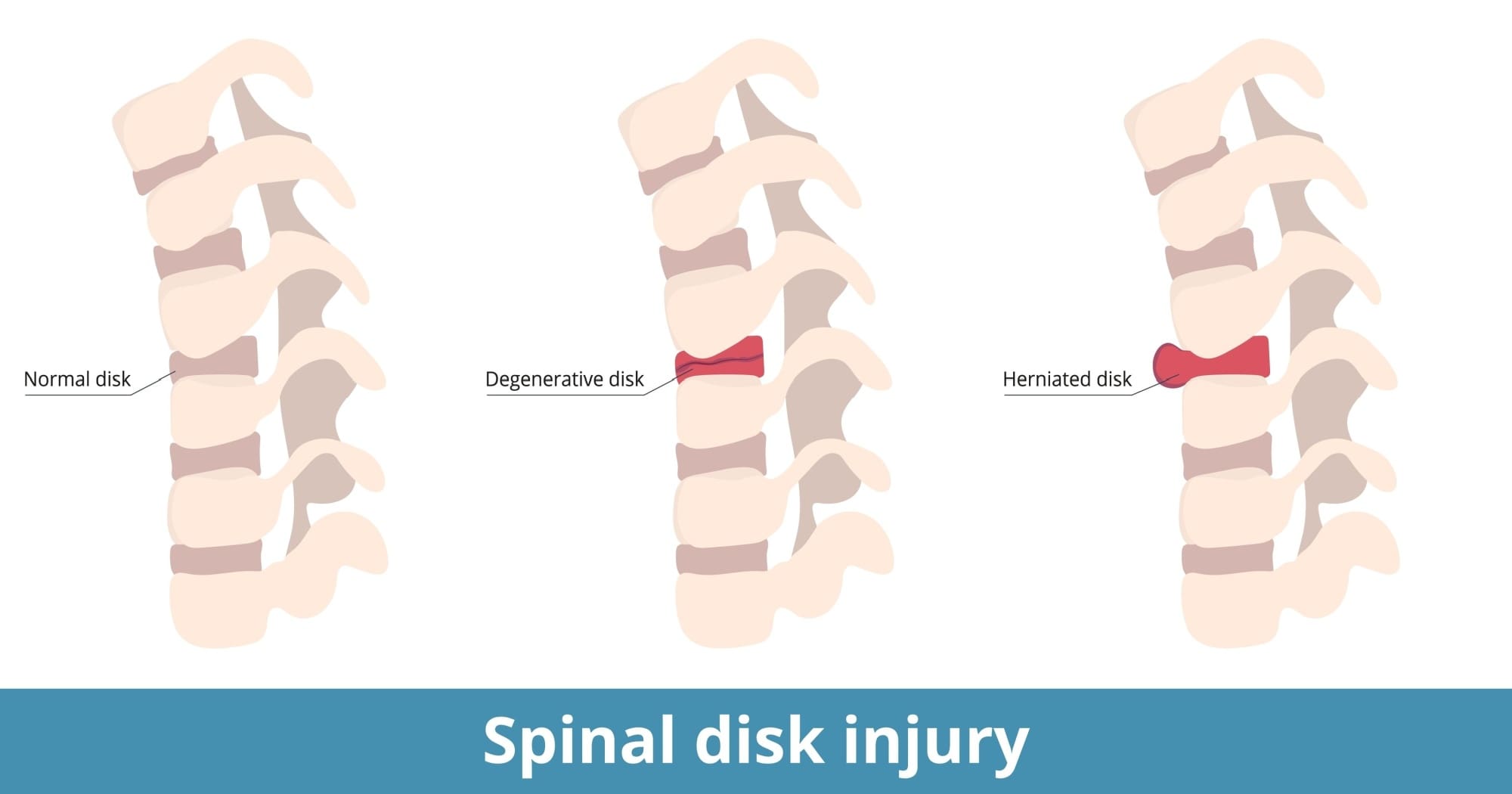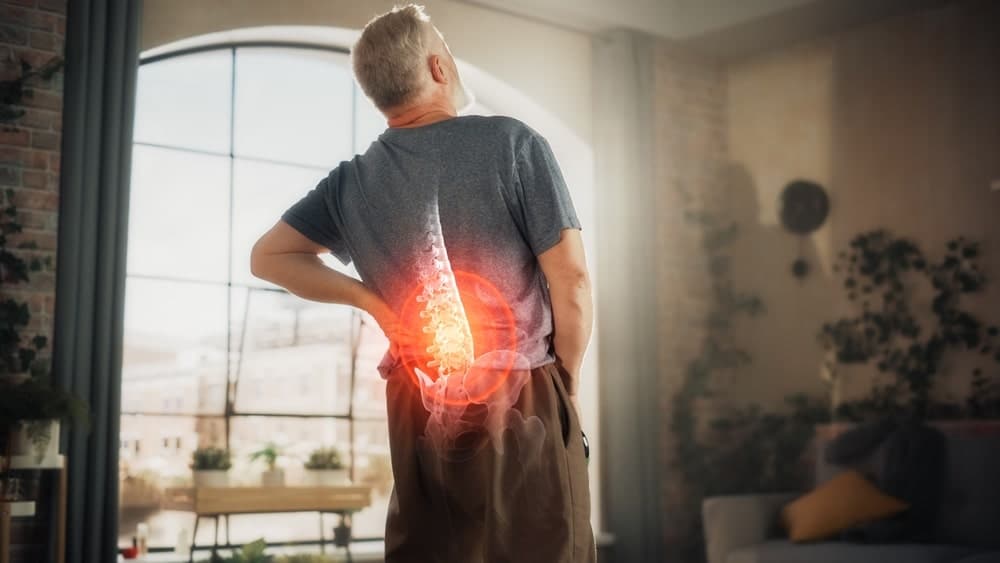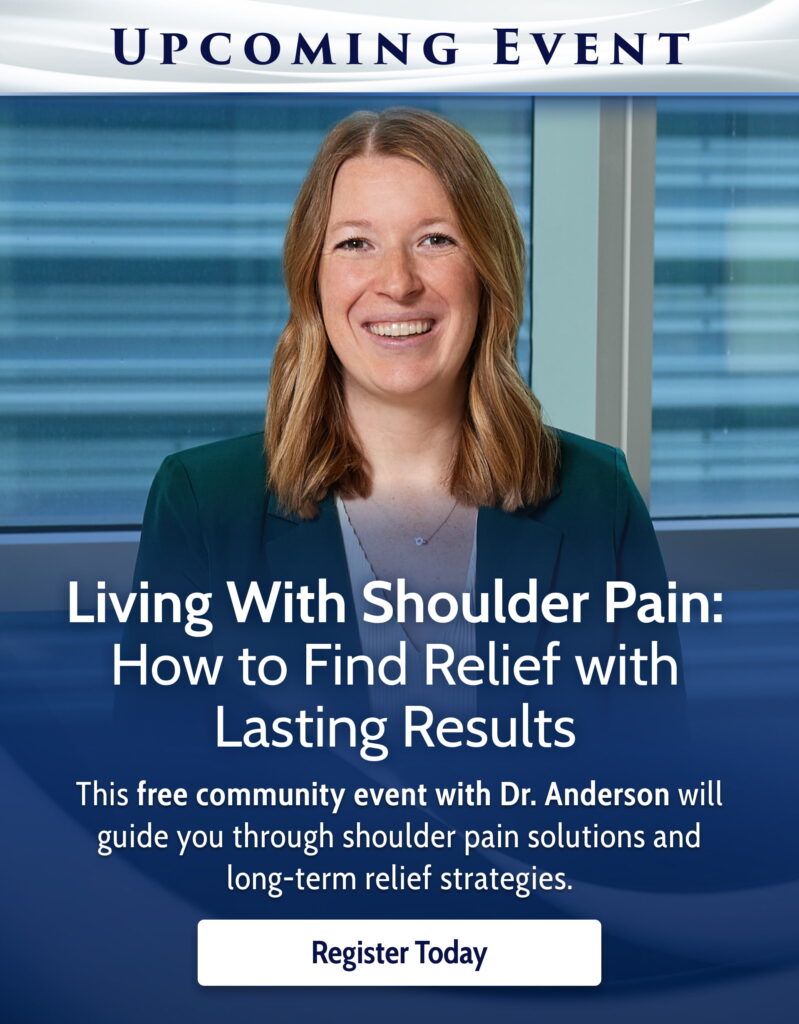If you’ve been experiencing persistent back or neck pain, you may have heard the term “degenerative disc disease” from your healthcare provider.
The name itself can sound frightening. However, degenerative disc disease affects millions of people and is far more common than you might think. While it can cause discomfort, it’s not the progressive, debilitating disease that its name suggests.
With proper understanding and treatment, and the support of OrthoUnited, you can continue to live an active, fulfilling life and be in an informed position to make decisions about your care.

Despite its name, degenerative disc disease isn’t actually a disease in the traditional sense.
Instead, it describes the natural wear and tear that occurs in your spinal discs as you age, similar to how your car’s shock absorbers gradually wear out with use.
Your spinal discs act as cushions between the vertebrae in your spine, providing flexibility and absorbing shock during daily activities. Each disc consists of a tough outer ring and a gel-like center. When healthy, these discs are filled with water, keeping them plump and flexible.
As you age, your discs gradually lose their water content and begin to break down. This process typically starts in your twenties or thirties, though you may not notice symptoms for decades.
How Degenerative Disc Disease Occurs
The breakdown of spinal discs doesn’t happen overnight; it’s a gradual process influenced by both controllable and uncontrollable factors, including the following:
Dehydration
The primary driver of degenerative disc disease is dehydration. As you age, your discs lose their ability to retain water, becoming thinner and less flexible. This changes the spacing between vertebrae and alters how your spine moves.
Overuse or Repetitive Strain
Mechanical stress from daily activities also contributes to disc wear. Every time you lift, bend, twist, or sit for extended periods, you place stress on your spinal discs. Decades of these normal movements gradually wear down the disc structure.
Genetic Predisposition
Genetics significantly influence how quickly your discs degenerate. If your family members have experienced disc problems, you may be more susceptible regardless of lifestyle choices.
A History of Back or Neck Injuries
Previous injuries can accelerate degeneration. Even old back or neck injuries that seemed to heal completely may have set the stage for faster disc breakdown later in life.
Lifestyle
Lifestyle factors also play a role. Smoking reduces blood flow to spinal discs, limiting their ability to receive nutrients. Excess weight puts additional stress on your spine, while staying physically active promotes disc health by maintaining circulation and keeping surrounding muscles strong.
Recognizing the Symptoms

Degenerative disc disease most commonly affects the lower back and neck. Symptoms vary depending on location and severity of disc degeneration.
The most common symptom is chronic pain that may worsen with sitting, bending, or twisting movements. You might notice that walking or lying down provides relief. Many people experience stiffness, particularly in the morning or after periods of inactivity.
If degenerating discs affect nearby nerves, you may experience radiating pain, numbness, or tingling that travels into your arms or legs.
In more severe cases, muscle weakness can occur in affected areas. Not sure if what you’re feeling is due to degenerative disc disease? Schedule a consultation with one of our specialists to get to the root cause!
Treatment Options
The good news is that degenerative disc disease can often be effectively managed with conservative treatments, like:
- Physical therapy is often the cornerstone of treatment. A skilled therapist can teach you exercises to strengthen spine-supporting muscles, improve flexibility, and reduce pain while helping prevent further degeneration. At OrthoUnited, we provide physical therapy in addition to consultation, diagnosis, and surgery.
- Pain management may include over-the-counter medications like ibuprofen or prescription medications when needed. Muscle relaxants can help with spasms.
- Lifestyle modifications play a crucial role. Maintaining a healthy weight, staying active with low-impact exercises, and practicing good posture all help reduce spinal stress.
- Injection therapy may be recommended for severe pain. Epidural steroid injections can provide temporary relief by reducing inflammation around affected nerves.
For cases where conservative treatments aren’t providing adequate relief, surgical options may be considered, ranging from minimally invasive procedures to more extensive surgeries. In fact, we’re leading the way on an innovative new surgical approach for lower back pain.
Move Forward With Professional Care
While degenerative disc disease is common, you don’t have to accept chronic pain as inevitable. With proper diagnosis and treatment, most people can find significant relief and maintain active lifestyles.
Are you dealing with back or neck pain? OrthoUnited is here to help! Schedule an appointment online at any of our convenient locations to begin your journey toward better spinal health.
